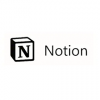
Programmable text snippets can be a powerful tool for businesses to increase efficiency and productivity when working with templates and documents. Here are some ways businesses can use programmable text snippets:
Automate repetitive tasks
Businesses can use programmable text snippets to automate repetitive tasks such as filling out forms or adding contact information to emails. Automating repetitive tasks in business refers to the use of technology to automate tasks that are repetitive, time-consuming, and often require little human input or decision-making. This can include tasks such as data entry, generating reports, processing invoices, and sending emails.
By automating these tasks, businesses can save time and reduce the risk of errors or inconsistencies, while freeing up employees to focus on more strategic and high-value tasks. Additionally, automating tasks can help businesses increase efficiency and productivity, as well as reduce costs associated with manual labor.
Standardize language and formatting
Text snippets can help businesses standardize language and formatting across different documents, ensuring consistency and accuracy. Standardizing language and formatting in business is important for ensuring consistency and clarity across all communication and documentation. This can help to build a professional image for the business and enhance understanding among employees, customers, and partners. Here are some tips on how to standardize language and formatting in business:
- Develop style guides: A style guide is a document that outlines specific guidelines for language and formatting in business communication. It can include rules for grammar, punctuation, tone, and style, as well as specific guidelines for different types of communication, such as emails, reports, and presentations. A style guide can help to ensure that all employees use consistent language and formatting in their communication and can serve as a reference for questions or uncertainties.
- Use templates: Templates can help to standardize formatting and layout for different types of communication. For example, using a standard email template can ensure that all emails sent by employees have a consistent structure and design, including elements such as a header, footer, and signature. Similarly, using a standard report template can ensure that all reports have the same structure, headings, and formatting.
- Provide training: Providing training to employees on language and formatting can help to ensure that they understand the guidelines and are able to apply them consistently. This can include training on grammar and punctuation, as well as training on specific software and tools that are used to create different types of communication.
- Use software tools: There are many software tools available that can help to standardize language and formatting in business communication. For example, spell check and grammar check tools can help to ensure that language is consistent and free of errors, while formatting tools can help to ensure that documents and presentations have a consistent layout and design.
Overall, standardizing language and formatting in business communication is important for ensuring consistency and clarity, and can help to build a professional image for the business. By developing style guides, using templates, providing training, and using software tools, businesses can ensure that all employees use consistent language and formatting in their communication.
Increase speed and accuracy
By using pre-written text snippets, businesses can reduce the time it takes to create documents and minimize errors. Increasing speed and accuracy in business documents is important for improving productivity and efficiency, as well as ensuring the quality of the final product. Here are some tips on how to increase speed and accuracy in business documents:
- Use templates: Using templates can help to speed up the document creation process and ensure consistency across different documents. Templates can include pre-defined formatting, structure, and content, and can be customized to meet specific needs.
- Utilize text expansion tools: Text expansion tools, such as TextExpander or Typing Hero, can help to speed up document creation by allowing users to create and insert pre-defined text snippets or templates with just a few keystrokes. This can help to save time and reduce the risk of errors.
- Proofread and edit carefully: Careful proofreading and editing can help to ensure that documents are accurate and error-free. This can involve reviewing documents multiple times, using spell check and grammar check tools, and seeking feedback from others.
- Use collaboration tools: Collaboration tools, such as Google Docs or Microsoft Teams, can help to speed up document creation by allowing multiple people to work on the same document simultaneously. This can help to reduce the time it takes to complete a document and ensure that everyone is working with the most up-to-date version.
- Automate workflows: Workflow automation tools, such as Zapier or IFTTT, can help to speed up document creation by automating repetitive tasks, such as sending emails or updating spreadsheets. This can help to reduce the time it takes to complete a document and ensure accuracy.
- Identify common communication scenarios: Begin by identifying common communication scenarios in your business, such as responding to customer inquiries, scheduling meetings, or sending out promotional offers. Think about the types of messages that you send in these scenarios and the information that needs to be included.
- Create templates: Use the information gathered in step one to create pre-defined templates for each communication scenario. This can include a basic structure for the message, along with placeholders for specific information that needs to be customized, such as the recipient's name or the date and time of a meeting.
- Customize the templates: Once you have created the templates, customize them for each individual message. This can involve inserting the appropriate information into the placeholders, such as the recipient's name or the meeting details. Depending on the programable text snippet tool being used, the placeholders can be created using different syntaxes such as curly braces { } or square brackets [ ].
- Test the templates: Test the templates to ensure that they are working correctly and that the customized messages are being generated as intended. Make adjustments as necessary to ensure that the messages are accurate and professional.
- Save the templates: Once the templates have been created and tested, save them as programable text snippets for future use. Depending on the tool being used, you may be able to organize the snippets into categories or folders for easy access.
- Identify common communication scenarios: Begin by identifying common communication scenarios in your business, such as responding to customer inquiries, providing status updates, or sending out meeting invitations. Think about the types of messages that you send in these scenarios and the information that needs to be included.
- Create text snippets: Use the information gathered in step one to create pre-defined text snippets for each communication scenario. This can include a basic structure for the message, along with placeholders for specific information that needs to be customized, such as the recipient's name or the meeting details. Depending on the text snippet tool being used, the placeholders can be created using different syntaxes such as curly braces { } or square brackets [ ].
- Customize the snippets: Once you have created the text snippets, customize them for each individual message. This can involve inserting the appropriate information into the placeholders, such as the recipient's name or the meeting details. Depending on the text snippet tool being used, you may be able to preview the customized message before inserting it.
- Insert the snippets: Use the text snippet tool to insert the pre-defined messages into your communication tools. Depending on the tool being used, this may involve using a keyboard shortcut or selecting the appropriate snippet from a menu.
- Test the snippets: Test the snippets to ensure that they are working correctly and that the customized messages are being generated as intended. Make adjustments as necessary to ensure that the messages are accurate and professional.
Overall, increasing speed and accuracy in business documents involves using tools and techniques that can help to streamline the document creation process and reduce the risk of errors. By using templates, text expansion tools, proofreading and editing carefully, using collaboration tools, and automating workflows, businesses can improve productivity and ensure high-quality documents.
Customize messages
Text snippets can be customized for different audiences, such as customers or employees, to ensure that the message is tailored to the recipient. Creating customized messages in programable text snippets involves creating pre-defined text snippets that can be easily inserted into messages, emails, or other communication. Here are some tips on how to create customized messages in programable text snippets:
By creating customized messages in programable text snippets, businesses can save time and ensure consistency and accuracy in their communication. With a little bit of planning and organization, customized messages can be created quickly and easily, allowing businesses to focus on more strategic tasks.
Streamline communication
Text snippets can be used to create canned responses for frequently asked questions or customer inquiries, allowing businesses to respond quickly and efficiently. Streamlining communication with text snippets involves creating pre-defined messages that can be easily inserted into emails, instant messages, or other communication tools. Here are some tips on how to streamline communication with text snippets:
By streamlining communication with text snippets, businesses can save time and ensure consistency and accuracy in their communication. With a little bit of planning and organization, pre-defined messages can be created quickly and easily, allowing businesses to focus on more strategic tasks.
Overall
To use programmable text snippets in templates and documents, businesses can use a variety of tools and software, such as Text Blaze and Linguix, that allow for the creation and storage of pre-written text snippets. Alternatively, businesses can use specialized software or plugins designed specifically for creating and managing text snippets. These tools often allow for the easy insertion of text snippets into documents and templates with just a few clicks or keystrokes.



















